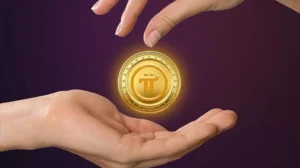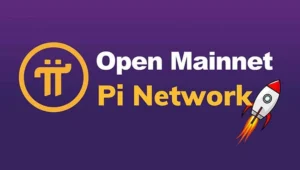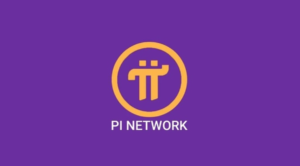1. Introduction: Why Pi Network is Still Making Headlines
Pi Network has remained one of the most talked-about names in the cryptocurrency space, not only because of its unconventional “mobile mining” model but also because of its massive community and its journey from closed testing to open public trading. While the initial years were full of mystery and speculation, the project has now entered a phase where developments are more transparent, and the market is reacting in real time.
For the millions of “Pioneers” who mined Pi through their smartphones, the last year has been a rollercoaster. Price volatility, new tools for developers, token unlock schedules, and growing debates over real-world utility have all played their part. Some see Pi as a sleeping giant ready to disrupt digital payments; others warn that without faster execution, the hype could fade.
This article dives deep into what’s been happening in Pi Network recently — from mainnet milestones and ecosystem growth to market challenges and long-term possibilities. We’ll break down each major theme, looking at both the excitement and the concerns, so you can understand the big picture and decide where you stand.
2. The Open Mainnet Milestone — Pi’s Public Debut
From closed testing to open access
For years, Pi existed in what many described as a “walled garden” — a closed network where transactions could only occur within the Pi ecosystem, and tokens couldn’t leave to be traded on public exchanges. This approach was intentional, giving the core team time to refine its technology, run mass KYC verifications, and prepare for regulatory compliance.
The open mainnet launch was a turning point. It allowed Pi holders to transfer tokens to external wallets, interact with exchanges, and begin building a real, functioning market for the currency. For the first time, Pi could be bought and sold outside the internal app, and this brought both excitement and new challenges.
Community reaction
For long-time Pioneers, the open mainnet felt like a long-awaited graduation day. Social media was full of celebratory posts, price speculation, and plans for using Pi in commerce. At the same time, many newcomers rushed in, hoping to profit from early volatility. This mixture of old loyalty and new speculation created a very dynamic — and sometimes unpredictable — market environment.
What it meant for developers
For app builders and blockchain entrepreneurs, the open mainnet unlocked the ability to design applications that could interact with the Pi blockchain in a meaningful way. Decentralized apps (dApps), payment gateways, and domain-based services began to take shape. The open mainnet wasn’t just about letting tokens move — it was about enabling real innovation.

3. Building the Ecosystem — AI, App Studio, and .pi Domains
Shifting from hype to utility
A big part of Pi’s current strategy is building tools and services that make the network useful beyond speculation. This is where initiatives like the Pi App Studio and .pi domains come in. By giving developers easy, no-code tools to create apps, Pi aims to dramatically lower the barrier to entry for blockchain innovation.
The Pi App Studio launch
The Pi App Studio is designed for creators of all skill levels. It allows Pioneers to develop decentralized apps without needing to master complex programming languages. This opens the door for small businesses, hobbyists, and even community groups to integrate Pi payments and blockchain functions into their services. The easier it becomes to build on Pi, the more likely it is that the ecosystem will grow organically.
.pi domains and staking incentives
Alongside the App Studio, the network introduced .pi domain names — digital addresses for Pi-based services. Domain staking lets owners earn rewards by promoting their apps within the ecosystem. While some users were excited about this, others felt it didn’t address bigger concerns like KYC delays or faster exchange listings. Still, it shows that Pi is thinking about long-term digital identity and branding inside its network.
4. Tokenomics and the Pressure of Supply
The unlock problem
One of the most talked-about topics in Pi Network news is token unlocks. In simple terms, not all mined Pi was made available at once. Instead, tokens have been released in phases. While this gradual release is meant to stabilize the market, the reality is that each unlock floods the market with new supply — which often puts downward pressure on price.
Market impact
When millions of tokens are released in a short period, the balance between supply and demand can tilt quickly. Even if new buyers enter the market, it can be difficult to absorb such large quantities without a price drop. This is one reason why Pi has seen periods of rapid decline after certain unlock events.
The distribution strategy shift
To avoid dumping tokens directly onto exchanges — which can trigger even sharper price falls — Pi has moved toward regulated distribution channels. By working with verified payment providers and focusing on KYC-approved wallets, they aim to encourage real-world usage rather than pure speculation. This approach is slower, but potentially healthier for the ecosystem over time.

5. The Market Reality — From Peaks to Price Struggles
Early highs, recent lows
When Pi first became tradable on some platforms, excitement drove prices into the $3 range. But as reality set in — and as unlocks increased supply — the value began to slide. In recent months, Pi has traded well under $1, with some periods dropping close to $0.30. This is a huge shift from early expectations and has tested the patience of many holders.
Volume and sentiment changes
Trading volumes have also declined significantly from their peaks, suggesting that fewer people are actively buying and selling Pi. This can be both good and bad — less trading often means less volatility, but it can also mean less market interest. For a project that relies heavily on community energy, declining sentiment is a real challenge.
Investor psychology
Cryptocurrency markets are deeply influenced by emotion. When prices fall, fear often spreads faster than facts. Some early adopters have held on tightly to their tokens, believing in a long-term rebound. Others have sold in frustration, worried that Pi’s best days are behind it. This split in sentiment creates an unpredictable environment for the token’s future.
6. Community Voices — Loyalty, Frustration, and Hope
Why Pioneers stay
Many Pioneers have been involved since the early days, when mining Pi simply meant tapping a button daily. For them, the network represents years of commitment and the promise of a community-driven currency. These users often have a long-term view and are less concerned about short-term price swings.
The growing impatience
On the other side, a significant portion of the community is growing restless. Delays in KYC processing, slow migration of tokens to mainnet, and the lack of more major exchange listings have led some to question the project’s pace. For these users, patience is wearing thin — especially when they see other crypto projects moving faster.
The social media battlefield
Platforms like X (formerly Twitter), Reddit, and Telegram have become arenas for debate. Optimists share news of ecosystem growth, while skeptics post charts showing price declines. This constant back-and-forth keeps Pi in the conversation, but also makes it harder for newcomers to form a clear opinion.

7. Long-Term Possibilities — Cautious Optimism
Potential for recovery
If Pi can accelerate utility adoption — meaning people can actually use Pi to pay for goods, services, or access apps — the demand side of the market equation could improve. This, combined with a slowdown in token unlocks, might help stabilize and eventually raise prices.
Regulation and compliance advantages
Pi’s careful approach to KYC and regulated distribution could also pay off in the long run. Many crypto projects face sudden setbacks when regulators crack down. By building compliance into its foundation, Pi may avoid some of these risks and position itself for mainstream partnerships.
The role of AI and mobile-first design
Pi’s focus on mobile usability and potential AI integrations could make it stand out in a crowded market. If the Pi App Studio successfully enables a wave of creative apps, the network could attract not just crypto traders but also everyday smartphone users looking for simple digital payment solutions.
8. Conclusion — The Road Ahead
Pi Network has reached an important stage in its journey. It has moved from an experimental mining app to a functioning blockchain with millions of users, developer tools, and real market activity. However, it is also facing the same challenges that many cryptocurrencies do: managing supply, building utility, and keeping community trust alive.
The coming year will be critical. Faster KYC completions, strategic exchange listings, and meaningful use cases will be the key to turning Pi from a speculative asset into a currency with staying power. Whether you’re an early Pioneer or a curious newcomer, the best way to follow Pi’s story is to keep an eye on both its technological progress and the mood of its vast global community.
Pi’s next chapter will decide if it becomes a case study in patient innovation — or a cautionary tale of lost momentum. For now, the network still has the tools, the user base, and the ambition to write a success story. The question is: can it deliver before the window of opportunity closes?
